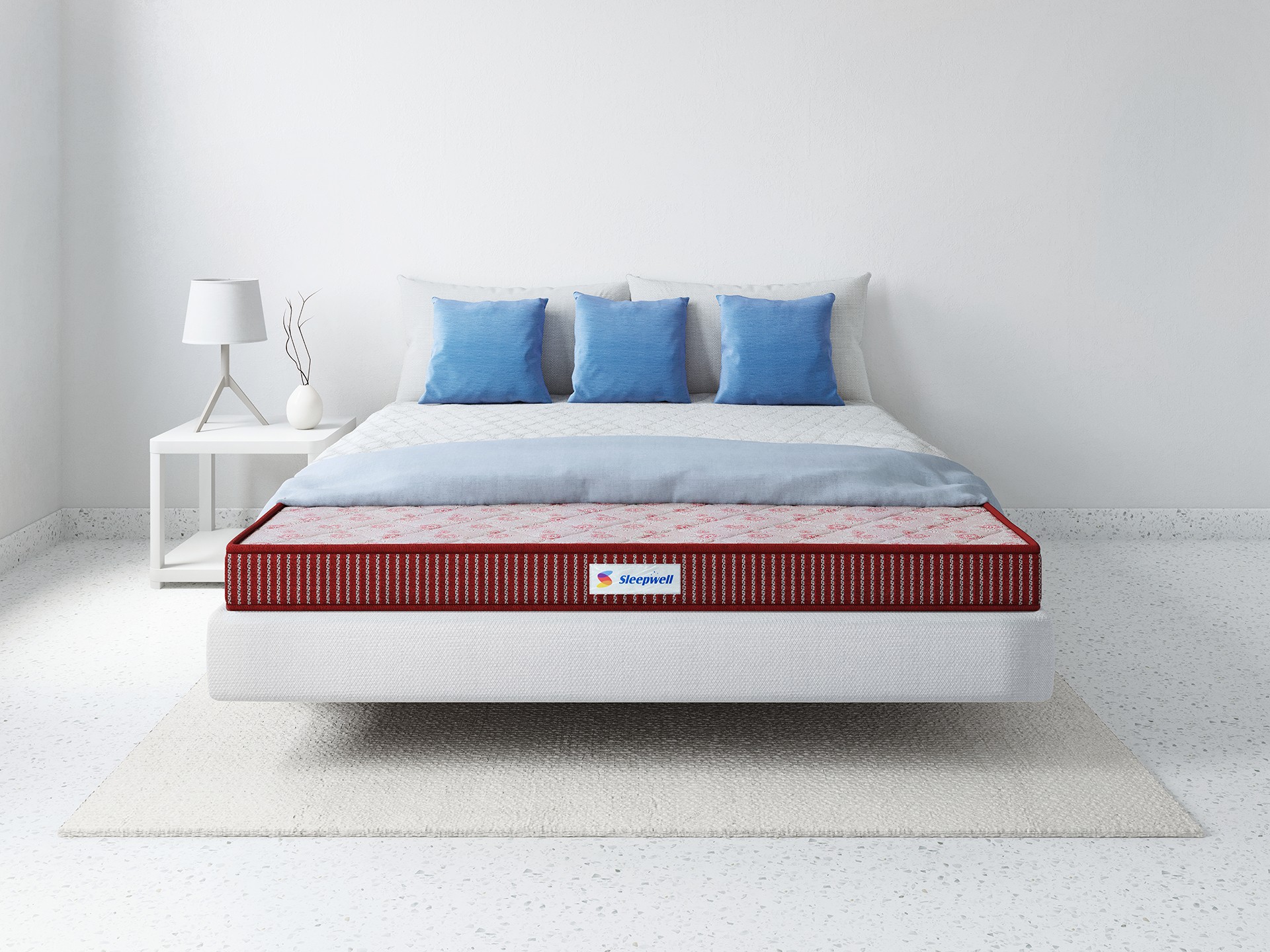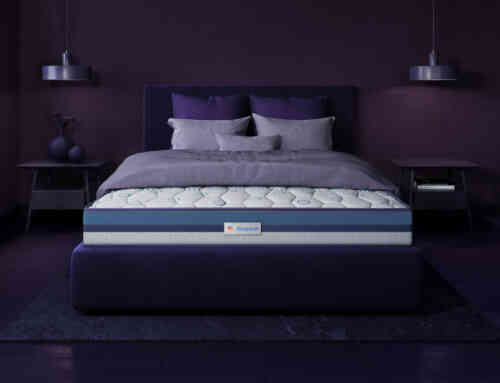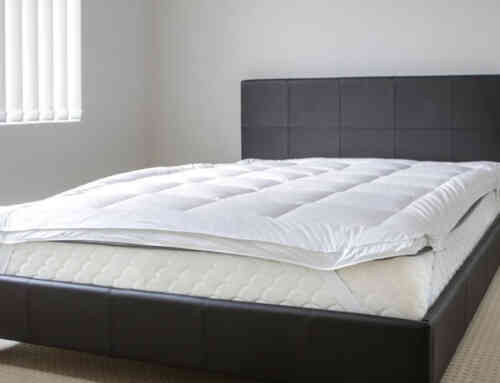Are you tired of waking up in the middle of the night, shivering under your thin and uncomfortable comforter? Look no further! In today’s blog post, we’re diving into the world of comforter materials. Whether you prefer down, synthetic fibers, or something else entirely, we’ve got you covered. Join us as we explore the pros and cons of each material to help you find that perfect cozy companion for a restful night’s sleep. Say goodbye to chilly nights and hello to ultimate comfort – let’s get started!
– Down
There are many different types of sleepwell luxury mattress on the market today, each with its own set of pros and cons. Down is a popular choice for comforters, but it can be expensive and may not be ideal for those with allergies. Synthetic materials are a more budget-friendly option, but they may not be as warm or durable as down.
Down is a natural material that is made from the feathers of ducks or geese. It is considered to be one of the most luxurious and warm materials for a comforter. However, it can be quite expensive and is not hypoallergenic, so it may not be the best choice for those with allergies.
Synthetic materials are usually made from polyester or other man-made fibers. They are often cheaper than down comforters, but they may not be as warm or durable. Synthetic materials can also be allergic to some people, so it is important to test them before using them in your bedding.
– Synthetic Materials
There are a few different types of synthetic materials commonly used in comforters, each with its own advantages and disadvantages. Polyester is one of the most popular choices, as it is relatively inexpensive and easy to care for. However, polyester is not as breathable as some other materials, so it may not be the best choice if you tend to sleep hot. Another common option is acrylic, which is also relatively inexpensive and easy to care for. Acrylic is also fairly breathable, making it a good choice for those who sleep hot. There is microfiber, which is very soft and comfortable but can be more expensive than other synthetic options.
– Wool
There are a few different types of materials that can be used to make a comforter, each with its own set of pros and cons. One popular material is wool. Wool is a natural fiber that is very effective at trapping heat, making it ideal for use in a comforter. It is also fairly durable and resistant to mold and mildew. However, wool can be expensive and may not be suitable for those with allergies.
– Cotton and Silk
Cotton and silk are two of the most popular comforter materials on the market. Both materials have their own unique set of pros and cons that you should consider before making a purchase.
Cotton is a natural material that is hypoallergenic and breathable, making it a great choice for those with allergies or asthma. Silk is also hypoallergenic but is not as breathable as cotton. Silk is a more expensive option than cotton, but it can be worth the investment if you want a luxurious and durable comforter.
Cotton comforters are typically easier to care for than silk comforters. You can machine wash and dry cotton comforters, but you must take extra care when cleaning silk comforters. Silk comforters should be dry cleaned or hand washed in cool water with a mild detergent.
Both cotton and silk comforters are available in a variety of colors and designs to suit your personal style. When choosing between the two materials, it ultimately comes down to personal preference. Consider your needs and budget when making your final decision.
Pros and Cons of Different Types of Comforter Materials
There are a variety of comforter materials on the market, from down and feathers to synthetic options. Each has its own set of pros and cons, so it’s important to know what you’re looking for before making a purchase.
Down and Feathers:
Down and feathers are a popular choice for comforters because they are soft and luxurious. However, they can be more expensive than other options, and they require special care to maintain their quality. Down and feather comforters also tend to be heavier than other types, so they may not be suitable for use in warmer climates.
Synthetic Materials:
Synthetic materials, such as polyester or acrylic, are often less expensive than down and feathers. They also usually require less care, although some may need to be washed in special detergents. Synthetic comforters can also be lighter than down comforters, making them a better choice for warmer weather. However, they may not be as warm as down-filled comforters and may not last as long.
– Down
There are a few different types of comforters on the market, each with their own set of pros and cons. Here, we’ll take a look at the down comforter, as well as some synthetic alternatives.
Down comforters are filled with feathers from ducks or geese. They’re very lightweight and can be quite warm, making them a popular choice for many people. However, down feathers can be allergens, and the comforters can be difficult to clean. Additionally, they tend to be more expensive than other types of comforters.
Synthetic comforters are filled with materials like polyester or acrylic fiber. These fibers are hypoallergenic and easier to care for than down feathers. Synthetic comforters also tend to be less expensive than down comforters. However, they may not be as warm as down comforters and may not last as long.
– Synthetic Materials
When it comes to comforter materials, there are a few different options available on the market. One option is natural down, which is made from the soft feathers of ducks or geese. Another popular option is synthetic down, which is made from polyester fiberfill. Both of these materials have their own set of pros and cons that should be considered before making a purchase.
natural down:
-Pros:
1) extremely soft and comfortable
2) good insulator against cold temperatures
3) hypoallergenic
4) naturally breathable
5) biodegradable
6) environmentally friendly
7) lasts longer than synthetic materials
8) easy to care for and clean
9) provides luxurious feel
10) often cheaper than synthetic counterparts
-Cons:
1) not as widely available as synthetic materials
2) can lose loft and become flat over time
3), need to be fluffed regularly to maintain shape
synthetic down:
-Pros: 1) more affordable than natural down 2) easier to find in stores 3) doesn’t lose loft or shape as easily 4) doesn’t require regular fluffing 5), can be machine-washed 6), usually hypoallergenic 7), good insulator against cold temperatures 8), often treated to be water resistant 9), dries quickly 10), perfect for those with allergies –
– Wool
There are a few different types of wool that can be used in comforters, including Merino wool, Shetland wool, and lambswool. All three of these wools have unique benefits that make them ideal for use in a comforter.
Merino wool is one of the softest types of wool available, making it extremely comfortable to sleep under. In addition, Merino wool is also very breathable and moisture-wicking, making it ideal for use in a comforter.
Shetland wool is another type of wool that is often used in comforters. Shetland wool is known for being very durable and resilient, making it ideal for use in a comforter that will see a lot of use. In addition, Shetland wool is also resistant to mold and mildew, making it an excellent choice for those with allergies or asthma.
Lambswool is the third type of wool often used in comforters. Lambswool is known for being extremely warm and cozy, making it ideal for use in a comforter during the colder months. In addition, lambswool is also very lightweight, making it easy to transport or store when not in use.
– Cotton and Silk
Cotton and silk are two natural fibers that are often used in comforters. Both materials have unique benefits and drawbacks that should be considered when choosing a comforter.
Cotton is a soft, breathable fabric that is ideal for people who suffer from allergies or asthma. It is also a durable material that will last for many years with proper care. However, cotton is a heavy fabric and can be difficult to clean if it becomes soiled.
Silk is a lightweight, luxurious fabric that feels smooth and silky to the touch. It is also hypoallergenic, making it a good choice for people with allergies. Silk is a delicate material, however, and can tear easily if not handled carefully. It is also more expensive than cotton.
Conclusion
When it comes to choosing a sleepwell mattress, there are many materials to choose from. We’ve discussed the pros and cons of each material so that you can make an informed decision when selecting your next comforter. From down for maximum warmth to synthetic fillers for easy care, there is something out there for everyone’s needs and preferences. So take some time and find the perfect comforter material that suits your lifestyle and will keep you warm all winter long!








Leave A Comment